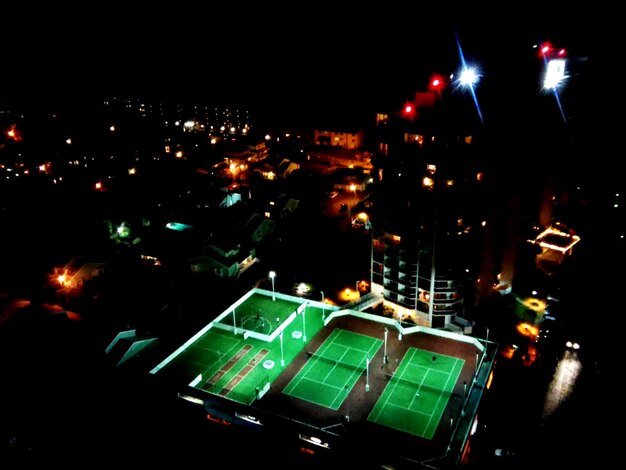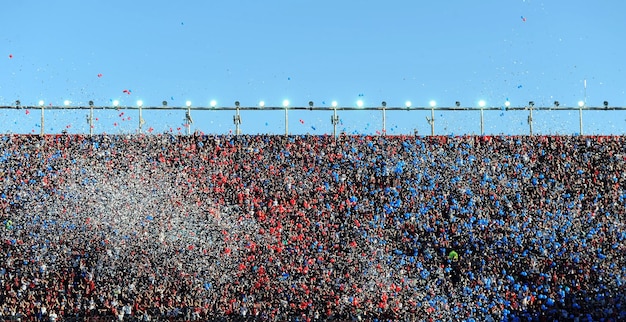US Soccer Fan Culture: Evolution From Then to Now

The evolution of US soccer fan culture has transformed significantly, moving from a niche interest to a mainstream phenomenon characterized by growing league support, diverse fanbases, and an increasingly vibrant matchday atmosphere across the nation.
The journey of soccer in the United States, particularly its fan culture, is a compelling narrative of growth, resilience, and an undeniable passion that has steadily forged its path. Understanding The Evolution of US Soccer Fan Culture: From Then to Now reveals a dynamic transformation from humble beginnings to a burgeoning movement.
The Early Seeds: A Niche Pursued
The history of soccer fandom in the United States is frequently misconstrued as a recent phenomenon, yet its roots stretch back further than many realize, deeply intertwined with immigrant communities. In the late 19th and early 20th centuries, nascent leagues like the American Soccer League attracted considerable support, primarily from European and Latin American immigrant groups who brought their love for the beautiful game with them. This early iteration of fandom was localized, community-driven, and often lacked the widespread media attention seen by sports like baseball or American football.
Despite this, dedicated pockets of supporters existed, creating vibrant, if often overlooked, subcultures. These early fans were pioneers, maintaining a connection to the sport through generations, even when it struggled to gain a foothold in the broader American sporting consciousness. Their commitment laid crucial groundwork, ensuring that soccer never entirely faded from the American landscape, even during its leaner periods.
Formative Years and International Influence
During the mid-20th century, international football tournaments occasionally captured American attention, particularly World Cups. These events provided fleeting glimpses into the global phenomenon of soccer, often sparking temporary interest. However, without a strong domestic league or consistent national team success, this interest remained largely transient. The North American Soccer League (NASL) of the 1970s and early 1980s, famously featuring stars like Pelé and Franz Beckenbauer, represented an ambitious attempt to mainstream soccer.
The NASL era was transformative, attracting larger crowds and introducing the sport to a wider American audience, moving beyond just immigrant communities. While the league eventually folded, it left an indelible mark, demonstrating the potential for professional soccer in the US. It was a period of both boom and bust, but crucially, it planted the seeds of a more diverse and expectant fanbase.
- The allure of international stars: Pelé’s arrival in New York Cosmos drew unprecedented attention.
- Groundbreaking television coverage: Expanded reach for the sport, albeit limited.
- Introduction of European fan traditions: Chants and scarves started to appear in US stadiums.
- Challenges of sustainability: Lack of long-term financial stability for many clubs.
This historical context is vital when discussing the modern evolution of US soccer fan culture. It highlights a continuous, albeit often challenging, thread of fandom that predates the MLS era. These early endeavors, with their successes and failures, collectively contributed to the foundation upon which today’s vibrant supporter culture has been built, emphasizing a legacy often overshadowed by more contemporary narratives.
The evolution of US soccer fan culture is deeply rooted in these early, often unsung, efforts.
The MLS Era: Building a Domestic Identity
The launch of Major League Soccer (MLS) in 1996, fueled partly by the success of the 1994 FIFA World Cup hosted in the USA, marked a pivotal turning point for domestic soccer fandom. Unlike previous attempts, MLS was designed with a long-term vision, focusing on stadium development, strategic market expansion, and, crucially, cultivating a distinct American soccer identity. This approach allowed fan culture to evolve organically, moving beyond mere emulation of European or Latin American models to create something authentically American, albeit with global influences. The league’s single-entity structure, while initially criticized, provided stability, allowing teams to invest in community engagement and fan development without the boom-and-bust cycles that plagued predecessors.
From Niche to Growing Mainstream Appeal
Initially, MLS attendance was modest, but dedicated supporter groups emerged, embracing the challenge of building a culture from the ground up. These groups, often starting as small gatherings of passionate individuals, became the backbone of early MLS fanbases. They brought energy, organized chants, and created colorful displays, setting the tone for what would become an increasingly vibrant matchday experience. The growth was slow but steady, driven by grassroots efforts and a genuine desire to see the sport succeed domestically. The league’s emphasis on local rivalries, coupled with the introduction of designated players (DPs) who brought international star power, helped to accelerate this process.
The league’s commitment to soccer-specific stadiums was another transformative factor. These venues, designed for the unique atmosphere of soccer matches, provided an intimate and intense environment, in stark contrast to the often cavernous multi-purpose stadiums where early MLS games were played. This enhanced the fan experience, making it more immersive and appealing.
- Dedicated supporter sections: Encouraging organized chanting and tifo displays.
- Local rivalries: Igniting passionate, often intense, inter-city competitions.
- Star player attraction: David Beckham’s arrival significantly raised the league’s profile.
- Soccer-specific stadiums: Creating an authentic and immersive matchday atmosphere.

The MLS era represents a calculated and sustained effort to build a legitimate, engaging, and uniquely American soccer presence. This period witnessed the development of a strong domestic fan identity, distinct yet connected to global soccer traditions, paving the way for the broader acceptance and enthusiasm seen today. The evolution of US soccer fan culture owes much to these foundational decades.
The Rise of Supporter Groups and Tifos
The growth of organized supporter groups has been arguably the most defining characteristic of the evolving US soccer fan culture. These groups, often known as Ultras or independent supporter groups (ISGs), are the beating heart of fandom in MLS and beyond. They are responsible for the vibrant chants, coordinated displays known as tifos, and the relentless energy that permeate stadiums across the country. Their influence extends far beyond matchday, as they often engage in charitable work, community involvement, and advocacy for their clubs and the sport.
The Art of Matchday Atmosphere
The concept of a tifo, a large artistic display often choreographed and unveiled by supporter groups, has become synonymous with the modern US soccer experience. These displays, which can range from simple banners to elaborate stadium-wide productions, require immense planning, resources, and volunteer effort. They serve multiple purposes: intimidating opponents, celebrating club history, honoring key players, or making a social statement. The competitive nature of tifo displays among different supporter groups adds another layer of excitement and rivalry to the game.
The coordination of chants, drum beats, and smoke bombs – though the latter is often controversial and restricted – creates an electrifying atmosphere that is increasingly recognized globally. This dedication to creating an immersive sound and visual experience sets US soccer fandom apart and has become a draw for casual fans and those new to the sport.
- The Terrace Culture: Adopted and adapted from European and South American models.
- Tifo Artistry: Showcasing creativity and dedication through large-scale visual displays.
- Vocal Support: Orchestrated chants and songs that reverberate through the stadium.
- Community Building: Supporter groups as social hubs beyond matchdays.
These collective actions demonstrate a deep emotional investment that transcends mere spectating; it’s about participation and active contribution to the matchday narrative. The evolution of US soccer fan culture is tangible in these spaces. Supporter groups don’t just watch the game; they are an integral part of its immersive spectacle, embodying the passionate, communal spirit that defines the sport’s global appeal and adapting it uniquely for the American context.
National Team Fervor and the World Cup Effect
While club fandom has steadily grown, the US Men’s National Team (USMNT) and Women’s National Team (USWNT) have played an unparalleled role in galvanizing a national soccer consciousness. World Cup tournaments, in particular, serve as powerful catalysts, drawing in millions of casual viewers and converting many into passionate, lifelong fans. The “World Cup effect” is a cyclical phenomenon that elevates soccer’s profile every four years, often creating new waves of interest that trickle down to domestic leagues.
Uniting the Nation Through Soccer
The USMNT’s journey in World Cups, from the surprising run in 2002 to the strong showing in 2014, has captivated the nation. Public viewing parties, often involving thousands of fans clad in red, white, and blue, have become common, transforming city squares and sports bars into temporary soccer meccas. This shared experience fosters a sense of national unity and pride, transcending geographical and demographic divides. The collective euphoria or heartbreak experienced during these tournaments creates powerful, lasting memories for fans, solidifying their connection to the sport.
The USWNT, with its unparalleled success on the international stage, particularly its multiple World Cup victories, has also played an instrumental role in shaping US soccer fan culture. Their dominance has not only inspired a generation of female athletes but has also attracted a significant, passionate fanbase that champions gender equality in sports and celebrates athletic excellence. The USWNT’s matches are often high-attendance events, demonstrating a strong, loyal following.
- Massive public viewing events: Bringing communities together for national team matches.
- Increased media attention: Broader coverage during major international tournaments.
- Youth soccer participation boom: Inspired by national team heroes and heroines.
- The USWNT’s enduring legacy: Championing success and social change.

The national teams act as a critical gateway, introducing millions to the intensity and global appeal of soccer. They provide a common ground for fans across various domestic clubs, uniting them under a single banner of national pride. This fervor undeniably contributes to the broader evolution of US soccer fan culture.
Youth Development and Grassroots Growth
The sustained growth of soccer fandom in the US cannot be discussed without acknowledging the profound impact of youth development and grassroots initiatives. Millions of American children participate in organized soccer leagues annually, making it one of the most popular youth sports in the country. This extensive youth participation acts as a crucial pipeline, fostering interest in the sport from an early age and cultivating future generations of fans, players, and advocates.
From Participation to Lifelong Fandom
Exposure to soccer at a young age builds familiarity and appreciation for the game’s nuances. Children who play soccer are far more likely to follow professional leagues, identify with national teams, and eventually attend live matches as adults. This personal connection, often initiated on local fields and through youth clubs, translates into a deeper, more enduring form of fandom. Furthermore, parents often become fans themselves through their children’s involvement, creating entire families of soccer supporters.
Grassroots efforts, including local amateur leagues, community soccer programs, and fan-organized events, also play a vital role. These initiatives make soccer accessible at all levels, strengthening the sport’s community roots. They provide opportunities for continued participation beyond youth leagues, keeping adults engaged as players, coaches, or active supporters. This widespread engagement at the base of the pyramid creates a fertile ground for the sport’s continued growth and the expansion of its fanbase.
- Early exposure: Introducing soccer to children as a primary sport option.
- Parental involvement: Often leading to family-wide soccer fandom.
- Accessibility of the sport: Relatively low barriers to entry for participation.
- Community-level engagement: Local leagues and programs strengthening fan ties.
The infrastructure of youth soccer academies, development programs, and collegiate soccer further solidifies this foundation, producing not just talented players but also educated and passionate fans. This emphasis on developing the sport from the ground up ensures a continuous influx of new supporters, solidifying the long-term prospects for soccer in the US. The evolution of US soccer fan culture is very much a reflection of this deep-seated engagement at the youth and grassroots levels.
The Future Landscape: Expansion and Media Engagement
Looking ahead, the future of US soccer fan culture is poised for continued expansion and deeper integration into the national sporting fabric. Key drivers of this forward momentum include ongoing MLS expansion, which brings professional soccer to new markets, and the increasing sophistication of media engagement, making the sport more accessible than ever before. The 2026 FIFA World Cup, co-hosted by the USA, Canada, and Mexico, represents an unprecedented opportunity to further accelerate this growth and solidify soccer’s place as a major American sport.
Adapting to the Digital Age and Global Trends
The digital age has profoundly impacted how fans consume soccer. Streaming services, dedicated soccer apps, and social media platforms have made it easier for fans to follow leagues and teams from around the world, as well as their local MLS clubs. This accessibility fosters a more informed and globally-aware fanbase, familiar with diverse playing styles and fan traditions. Podcasts, fan forums, and online communities create spaces for deeper engagement, discussion, and connection among supporters, irrespective of geographical location.
The impending 2026 World Cup is set to be a monumental event, not just for the tournament itself, but for its potential to leave a lasting legacy for soccer in the US. Hosting matches will expose millions more Americans to the sport at its highest level, likely inspiring a new surge of interest and participation. The infrastructure improvements and global attention generated by the World Cup are expected to benefit MLS, youth soccer, and the national teams for years to come, further cementing the evolution of US soccer fan culture.
- Streaming services: Expanding access to domestic and international matches.
- Social media engagement: Fostering online communities and discussion.
- Data analytics and fantasy leagues: Adding another layer of fan involvement.
- 2026 World Cup impact: Expected to create a significant, lasting legacy.
As the American population continues to diversify, reflecting global demographics where soccer is a dominant sport, the natural affinity for the game will only grow. This demographic shift, coupled with strategic league expansion and sophisticated media outreach, positions US soccer fan culture for a bright and prosperous future, becoming an even more integral part of the American sports landscape.
| Key Point | Brief Description |
|---|---|
| 🌱 Early Beginnings | Soccer fandom started in immigrant communities, with early leagues like the NASL attempting to expand appeal. |
| ⚽ MLS Foundation | Launched in 1996, MLS built a domestic identity through strategic expansion and supporter group development. |
| 🎉 Fan Culture Boom | Rise of vibrant supporter groups, elaborate tifos, and passionate matchday atmospheres. |
| 🌎 Global Impact | National team success and World Cup hosting duties amplify broader fan engagement and growth. |
Frequently Asked Questions
▼
Early soccer fandom in the US was largely confined to immigrant communities, particularly from Europe and Latin America, during the late 19th and early 20th centuries. Leagues like the American Soccer League had dedicated followers, but lacked widespread mainstream appeal, often overshadowed by established American sports. This period laid foundational, albeit niche, groundwork for future growth.
▼
Major League Soccer, launched in 1996, provided a stable domestic league structure, fostering localized team identities and rivalries. Its emphasis on soccer-specific stadiums enhanced the matchday experience, encouraging the formation of dedicated supporter groups who actively created vibrant atmospheres with chants and tifos, building an authentic American soccer culture.
▼
The US Men’s and Women’s National Teams significantly boost soccer’s national profile, especially during World Cups. These tournaments create collective viewing experiences and national pride, drawing in millions of new fans. The USWNT’s success, in particular, has garnered a massive following, inspiring youth participation and raising the sport’s visibility across the country.
▼
Youth soccer participation is a critical pipeline for creating lifelong fans. Millions of American children play soccer, fostering an early connection to the game. This grassroots involvement, often extending to parental engagement, ensures a continuous stream of new supporters and a deeper appreciation for the sport’s intricacies from a young age.
▼
The future looks promising with continued MLS expansion, increasing digital media engagement, and the upcoming 2026 FIFA World Cup co-hosted by the US. These factors are expected to further accelerate growth, enhance global connectivity, and solidify soccer’s place as a mainstream sport in the American landscape, attracting even more diverse fanbases.
Conclusion
The evolution of US soccer fan culture represents a journey from an overlooked, niche interest to a thriving, dynamic movement. What began in the hearts of immigrant communities has blossomed into a widespread passion, fueled by the strategic growth of Major League Soccer, the electrifying atmosphere created by dedicated supporter groups, the unifying power of the national teams, and the foundational strength of youth participation. As the United States prepares to co-host the 2026 FIFA World Cup, the trajectory of this cultural transformation appears stronger than ever, promising an even brighter future for the beautiful game across the nation.





